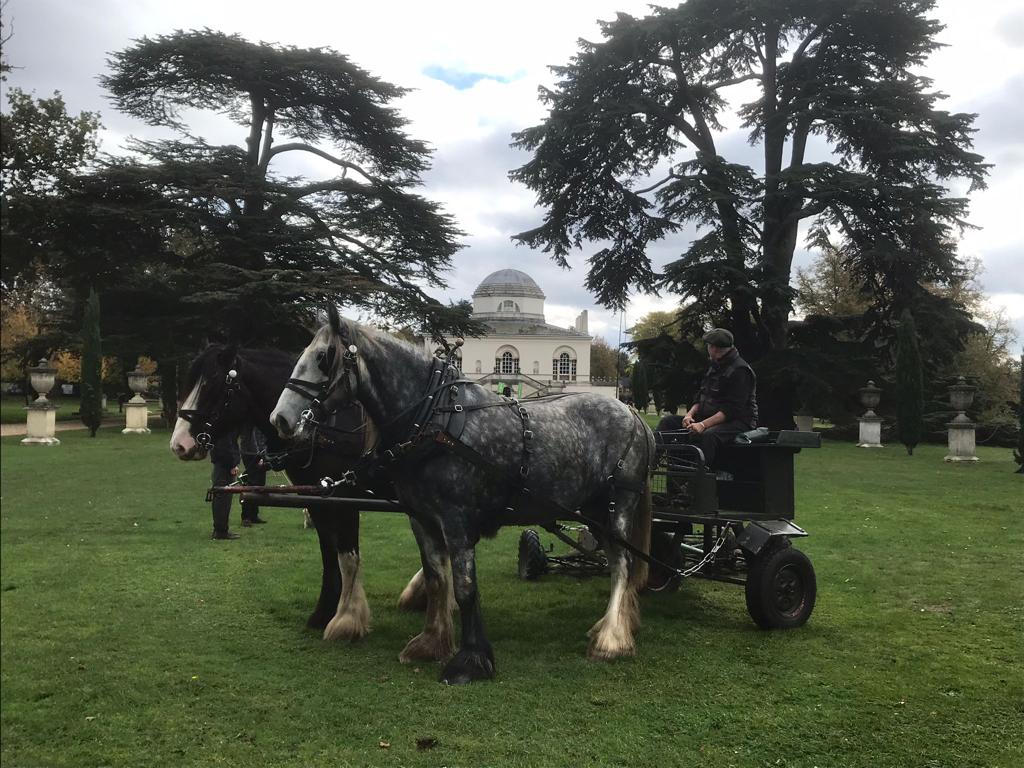Operation Centaur: the heavy horses pulling their weight in the Chiswick Gardens
If you were lucky enough to be in the gardens last week you might have seen some beautiful beasts helping out in the Gardens. We met up with Liz Lewis from Operation Centaur to find out more about their incredible working horses.
Tell us a little bit about Operation Centaur
Founded over 30 years’ ago, Operation Centaur promotes the relevance of working horses to urban areas. Our team are involved in conservation, heritage work and through therapeutic and community projects. We demonstrate that working horses can still play a pivotal and contemporary role in London life.
What is a ‘working horse’?
A working horse (also known as a shire or draft horse) is a large horse that has been bred to do heavy work, such as ploughing, farming, forestry and hauling large loads. Shire horses are commonly known for their well-muscled builds and docile temperaments. You can also identify them through their distinctive feathering on their legs.

How do you select and train a strong working horse?
When we select our horses, we look for a number of things. Firstly, we always try to buy young ‘untouched’ horses so we can undertake all their training ourselves. This ensures they get the best start and enjoy their work, which makes for happy and safe horses for years to come.
Sometimes a colour can be one of our selection criteria, if we’re time looking for a match for one of our other horses. Good legs and feet are also vital. There’s a very old saying when buying a heavy horse: ‘Leg, bone, foot and feather. Tops will come but bottoms never.’ This means that when buying a young heavy horse, it’s most important to check their legs and feet as their body will develop with time.
Above all the horse must have a good temperament. If they are quick-tempered or don’t have an agreeable disposition it probably won’t change with maturity. We must ensure every one of our horses are safe, contented and sociable as all of the spaces we work in are amongst people and dogs. We would never place an uncertain horse in a situation where they could endanger either themselves or the public.
What are the benefits of using heavy horses for conservation work?
We have a vital role to play in modern conservation. The benefits of involving a working horse include:
- The ability to efficiently traverse otherwise inaccessible woodland slopes.
- Using horse-drawn machinery to control bracken in sensitive acid grassland habitats, cut hay to regenerate wildflower meadows and removing logs.
- In comparison to using machines, working horses have a reduced environmental impact in terms of soil compaction, noise and physical disturbance of flora and fauna and a lower carbon footprint.
- And people LOVE it! It’s a great opportunity to see the horses in action and using traditional farming/land management methods.
How did the heavy horses help the Chiswick House gardeners?
The horses were a huge asset to the team. They cut down the meadows in the Gardens and large areas of grassland. Work that would have taken the team about 5 days, was done in 1 and a half by William and Bess! It’s a much more sustainable way of working, with lower carbon output – and the public loved seeing them!
Operation Centaur will be back at Chiswick House & Gardens in 2022. Find out about their work at: www.operationcentaur.com